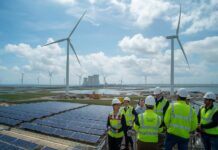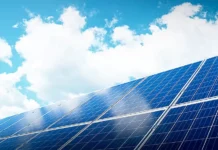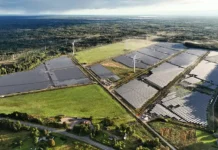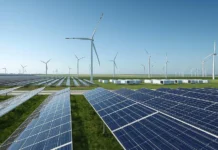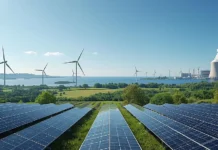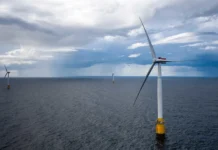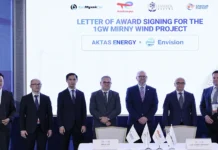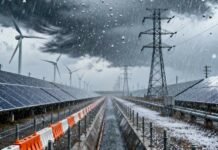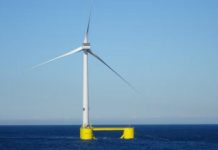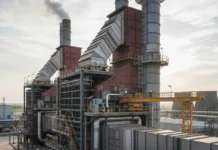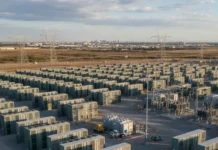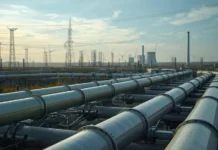China’s Clean Energy Spend Matches US, EU Total
China is leading the way in the rapidly developing race to a low-carbon future. According to the International Energy Agency’s (IEA) most recent World Energy Investment 2025 report, China currently invests almost as much in energy as the United States and the European Union combined. Furthermore, the majority of the investment will be directed towards clean, renewable technology.
The IEA’s analysis, released last week, predicts that global energy investment will reach $3.3 trillion in 2025, a 2% increase over 2024. Of this massive amount, around $2.2 trillion is set aside for clean energy technology, setting a new record in global climate-aligned investment. These include solar photovoltaics, wind, nuclear power, battery storage, better grid infrastructure, and electrification initiatives like electric cars and heat pumps.
While several nations have declared aggressive objectives for achieving net-zero emissions in the next decades, China is already putting its money where its mouth is. According to the IEA, China now contributes for about one-third of all global renewable energy investment, up from 25% only a decade ago.
To put things into perspective, China’s energy investment footprint in 2025 is estimated to exceed the combined renewable energy investment of the United States and the European Union. This startling statistic not only emphasises China’s dominating industrial position in the global energy revolution, but it also demonstrates a widening East-West divergence in infrastructure and energy policy.
Energías Renovables, a Spanish site, reported on the IEA’s study that China is prioritising solar PV output, battery manufacture, and electric grid improvements to achieve deep decarbonisation.
Solar dominance and storage desire.
One of China’s most prominent areas of leadership is solar energy. The IEA emphasises that Chinese enterprises account for more than 80% of global solar panel output, making local investments in solar infrastructure doubly important. China not only installs the most panels, but it also manufactures the majority of those used across the world.
Battery production and storage facilities are also getting significant support, with Beijing seeing long-term storage as critical to a stable and robust renewable-powered grid. The interaction of solar deployment and storage capacity is critical for addressing the intermittency difficulties faced by renewable energy.
A sturdy grid—but not strong enough.
Despite this strong increase in renewables and storage, the IEA cautions that China, like many other nations, is not spending rapidly enough in its electrical networks. While solar and wind expenditures are increasing, obsolete or inadequate grid capacity may eventually become a bottleneck, preventing all of the green energy from reaching customers or being appropriately balanced throughout the nation.
According to the analysis, global grid investment must treble by 2030 to meet renewable energy targets. In China’s instance, the network infrastructure may lag behind its generating capacity, thereby stressing the system and increasing susceptible to outages or curtailments.
Geopolitical Implications
China’s enormous energy investment spree has worldwide ramifications. As Western countries work to decrease emissions and satisfy their climate pledges, China’s supremacy in renewable energy technology may generate new dependencies, similar to how Europe used to rely largely on Russian gas. Whether it’s solar panels, batteries, or rare earth metals, China is widely seen as a green energy giant.
This transition raises concerns about long-term energy security and technical sovereignty. Europe and the United States have undertaken multibillion-dollar projects, such as the EU’s Green Deal Industrial Plan and the US Inflation Reduction Act, to attract clean tech industry closer to home. However, according to IEA statistics, China continues to lead in terms of size and pace.
Looking forward
Global momentum is developing. 2025 will be a watershed moment in renewable energy history, with $2.2 trillion invested this year alone. Investment in energy production, transmission, and storage has already surpassed fossil fuel investment by 50%, indicating that the transformation is not only happening, but also accelerating.
But the pace must accelerate. The IEA cautions that without stronger policy assistance and speedier grid improvements, many nations would fall short of their climate commitments. China’s experience demonstrates what is achievable when investment coincides with infrastructure and industrial strategy. It remains to be seen if others would follow suit and mimic China’s centralised strategy.
For the time being, one thing is certain: if renewable energy is the driving force behind tomorrow’s economy, China is already in command.


